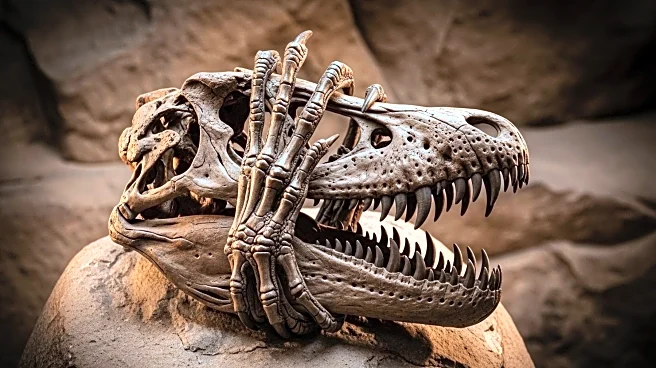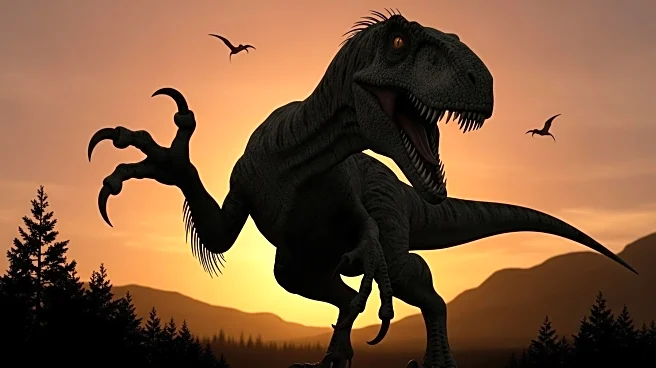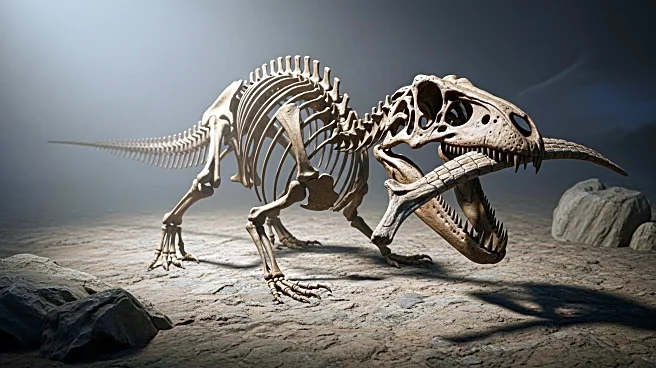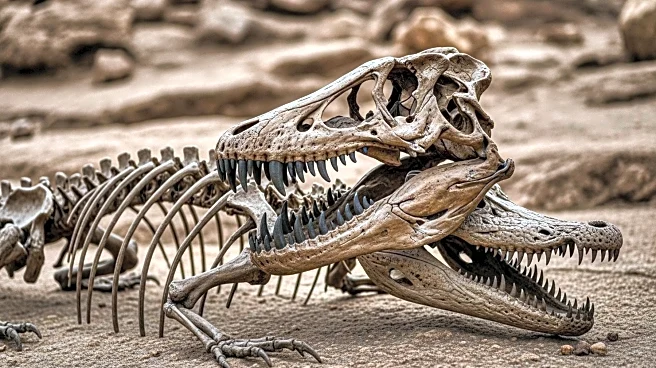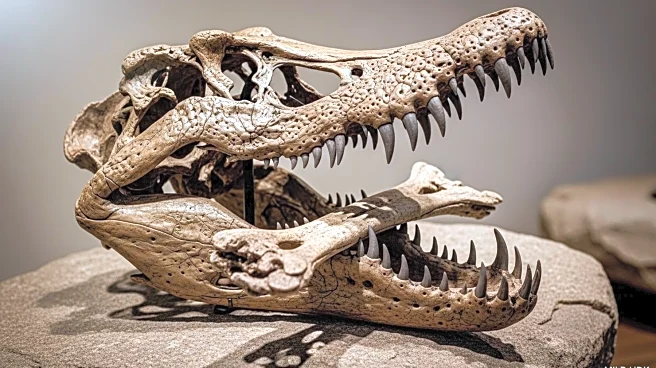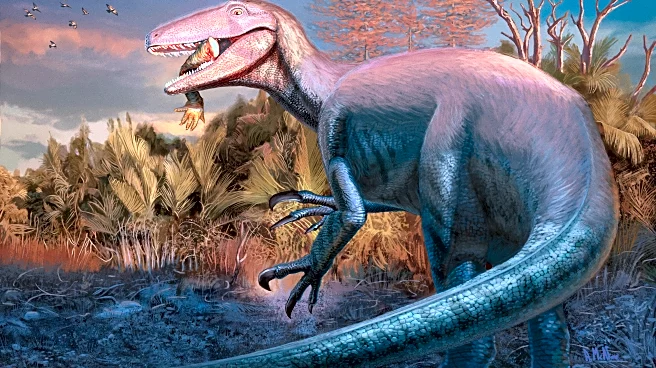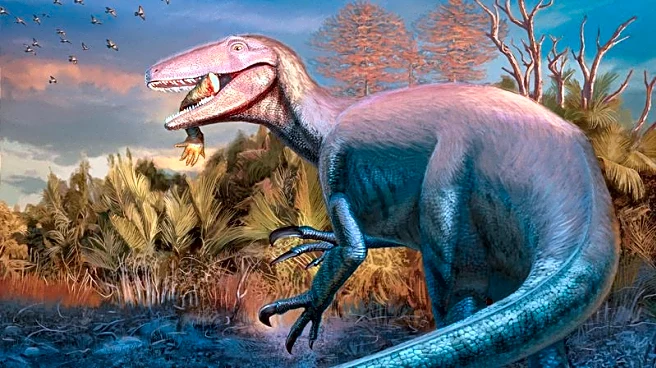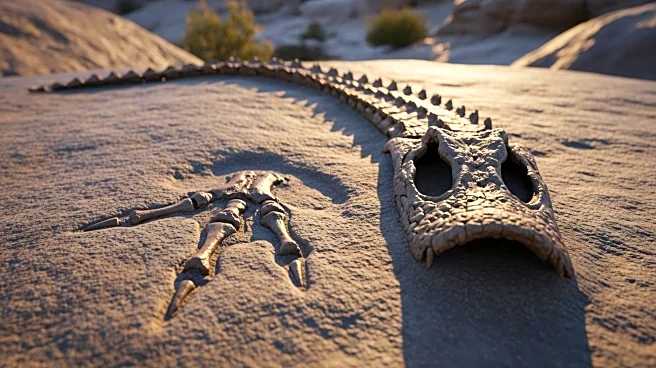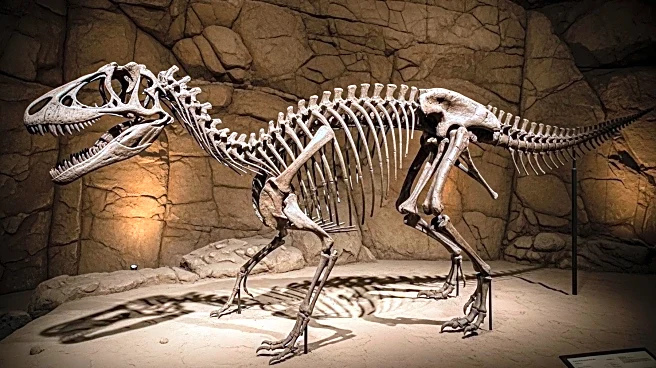What's Happening?
Paleontologists have unearthed a new species of dinosaur, Joaquinraptor casali, in Patagonia, Argentina. This dinosaur, a member of the megaraptor family, was discovered with the leg bone of an ancient crocodile relative in its jaws, suggesting it was a top predator during the Late Cretaceous period. The fossil, found in the Lago Colhué Huapi Formation, includes much of the skull, ribs, vertebrae, and limbs. Joaquinraptor casali was approximately 23 feet long and weighed over 2,200 pounds. The discovery provides insight into the evolutionary history of megaraptors, which were carnivores with elongated skulls, powerful arms, and large claws.
Why It's Important?
The discovery of Joaquinraptor casali is significant as it sheds light on the predatory dynamics of the Late Cretaceous period in South America. This dinosaur's existence suggests that megaraptors occupied the apex predator niche in the region, filling a role similar to that of Tyrannosaurus rex in North America. The find contributes to the understanding of megaraptor evolution and their ecological role before the mass extinction event. It also highlights the diversity of predatory dinosaurs and their adaptations, such as powerful claws and swift movement, which allowed them to dominate their environment.
What's Next?
Further analysis of the Joaquinraptor casali fossil will continue to provide insights into the megaraptor family and their dietary habits. Researchers may explore the sedimentary conditions of the fossil site to understand the environmental factors that influenced the dinosaur's life. Additionally, comparisons with other megaraptor fossils could refine the understanding of their evolutionary trajectory and ecological interactions. The discovery may prompt new expeditions to uncover more specimens and expand knowledge of the Late Cretaceous ecosystem.
Beyond the Headlines
The discovery of Joaquinraptor casali raises questions about the ecological balance and predator-prey relationships during the Late Cretaceous period. The presence of a crocodile leg in its jaws suggests complex feeding strategies and interactions with other species. This find also emphasizes the importance of paleontological research in understanding prehistoric life and the factors leading to the extinction of non-avian dinosaurs. The study of such fossils can inform current biodiversity and conservation efforts by providing historical context on species adaptation and survival.

